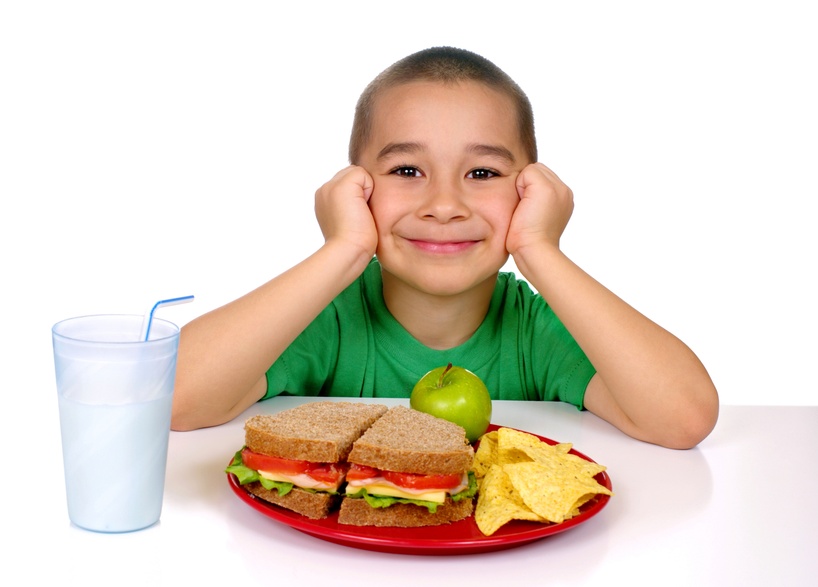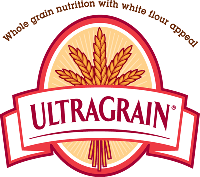Share This
School lunch may hold memories of tasteless French toast sticks and pizza with crust like a marble slab, but these days school lunches have had a whole grain upgrade. Thanks to the 2012 Nutrition Standards for the National School Lunch and School Breakfast Programs, grain products served in schools must be whole grain-rich — meaning they must make at least half of their grain ingredients whole. Though studies, like this 2014 study from the European Journal of Nutrition, have shown the positive influence a healthy whole grain-rich diet can have on children’s academic performance, implementing the 2012 meal pattern requirements did not come without its logistical challenges.
This year’s Whole Grains Council conference brought together a wide array of professionals, including those involved in regulating, running, and supplying school meal programs. Conference attendees learned about available resources and on-the-ground experiences from the Successful School Lunch with Whole Grains panel discussion, and discovered the wide array of delicious whole grain foodservice products many of our sponsors have available. These experts offered us a glimpse of what it takes to create a school meal program that meets government criteria, while also delighting the taste buds of their primary audience – kids.
Sonya Barnes, Branch Chief of Nutrition and Technical Assistance for the FNS Child Nutrition Programs, caught us up on the digital resources and guides available to help schools plan, procure, and record the meals they serve throughout the year. Their web-based food buying guide serves as a centralized resource for all meal pattern guidelines, providing recipe analysis and yields. Also available is a digital workbook, calculating the meal pattern contribution of a recipe which provides a streamlined path to proof of credit. There is even a guide dedicated to whole grain-rich foods, complete with kid tested and approved recipes.
As the Food Service Director for the St. Labre Indian Schools in Montana, Brian Jones has dealt with the on-the-ground challenges that come with meeting the school menu nutritional requirements, but he finds being a part of what he calls “the largest test kitchen in the United States” an ultimately rewarding experience. His whole grain success stories—and there are many—center around engagement of his target audience and innovation based off of their feedback.
By observing what kids eat, and what they throw away, and by asking why, he and his staff are able to involve their students in decisions and ultimately offer whole grain-rich meals that the students are not only eating, but getting excited about.
Foodservice manufacturers have also stepped up to the plate, flexing their innovation muscles and creating products and partnerships to address roadblocks and difficulties expressed by the school meal community, helping to ease the transition to new whole grain ingredients.
Take, for example, Ardent Mills and their Ultragrain® flour. Ultragrain® is a white whole wheat flour that acts like the white flour foodservice professionals are already familiar with, and it has the taste and texture of the traditional white flour students are used to eating. Aware of the multifaceted challenges faced by program operators, Ardent Mills created the SuperKids program, partnering with an array of foodservice companies that use Ultragrain® flour to supply schools with free samples. “The schools are able to sample a variety of products made with Ultragrain® flour free of charge.” explained Zack Sanders, the Director of Marketing at Ardent Mills. “They then can test them with their students, and those foods that they like, they can add them permanently to their menus.” Ardent Mills even ran a taste test in conjunction with the University of Minnesota, pitting 50% Ultragrain® flour pizza crust against a refined grain crust. The results are back, and kids consumed just as much of the whole grain-rich crust as the refined crust. “The program is very rewarding […] we are able to assist schools in meeting whole grain nutritional guidelines and most importantly help kids in our schools eat healthier, with foods they actually like.”
It has taken a team effort, from foodservice innovation to the creation of government resources, to ensure our nation’s youngest generations are served delicious and whole grain-rich meals. Together, we can ensure kids are introduced to the wonderful world of whole grains in a delicious and nutritious way! If you are looking to get kids even more involved, make sure to check out our fun, educational resources. (Abby)



Add a Comment